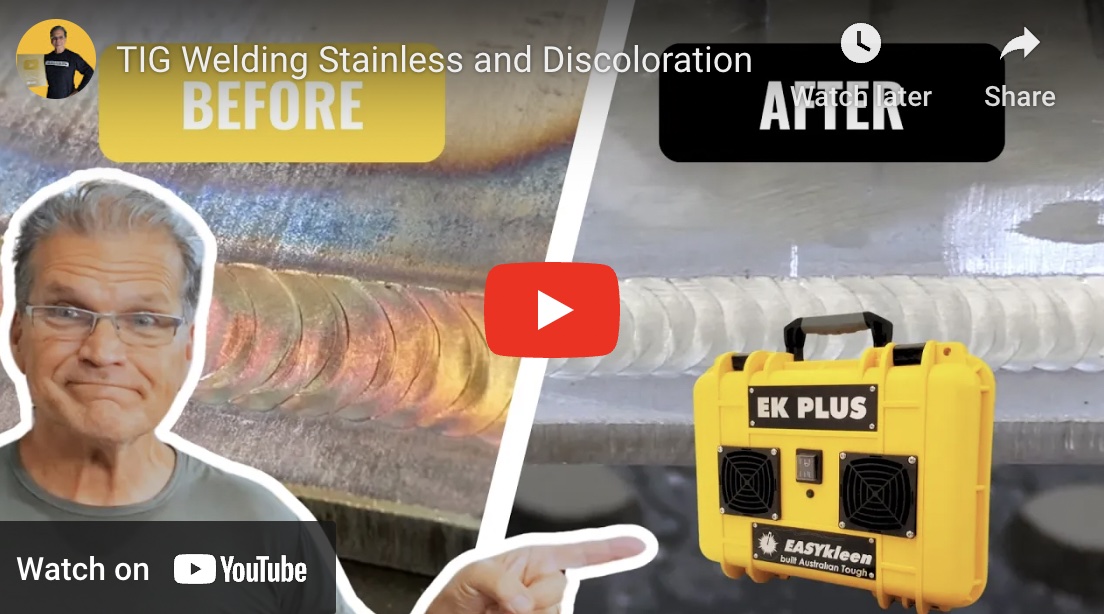TIG Welding Stainless Steel Gas
The main shielding gas for tig welding stainless is pure Argon.
There are also a few special procedures that utilize nitrogen for purge gas and/or a mix of argon with small addition of hydrogen.
But most TIG welding of stainless steel is done using pure argon.
- HOME
- Tig Welding Stainless Steel
- Tig Welding Stainless Steel Settings
- Tig Welding Stainless Steel Gas
Sanitary Stainless TIG welding uses pure argon
Industry where TIG welding stainless is common is sanitary stainless tubing welding for food and beverage..and also pharmaceutical.
For sanitary stainless tig welding, the main thing is quality of the purge and the surface of the root on the inside diameter.
This requires a good argon purge as well as the right amperage and right technique.
Tips For TIG welding Stainless Steel
Here are a few best practices for TIG welding stainless steels:
- purge the back side of any full penetration stainless weld with argon
- use only stainless steel wire brushes to remove heat tint
- use only grinding wheels that have only been used on stainless
- Get your puddle started quickly and get moving quickly
- stainless steel loves argon so use a gas lens setup and a larger diameter cup
- one size smaller filler metal often helps with tig welding stainless steel
Heat tint removal and passivation
The colors you see on a stainless steel tig weld are a layer of oxidation.
Those colors might be pretty but in order to have the maximum corrosion resistance, removing those colors is needed.
Passivation of stainless steel welds is an important post-weld process that enhances the material's resistance to corrosion and maintains the stainless properties.
Here are the main reasons for passivating stainless steel welds:
- Remove Surface Contaminants
During welding, stainless steel can become contaminated with iron particles, dust, or residue from tools. These contaminants can cause localized rusting if not removed. - Restore Chromium Oxide Layer
The natural protective chromium oxide layer on stainless steel can be disrupted or depleted during welding. Passivation helps restore this layer, ensuring long-term corrosion resistance. - Prevent Pitting Corrosion
Welded areas are often more prone to pitting corrosion due to heat-affected zones (HAZ) and the potential presence of inclusions. Passivation reduces the risk of this localized form of corrosion. - Enhance Aesthetic Appearance
Passivation can improve the surface finish of stainless steel, removing discoloration or weld burns and ensuring a clean, uniform appearance. - Improve Performance in Harsh Environments
In industries such as food processing, chemical processing, and marine applications, stainless steel welds are often exposed to aggressive environments. Passivation ensures that these welds maintain their integrity and performance over time. - Comply with Industry Standards
Many industries have strict guidelines and standards for the passivation of stainless steel to ensure the safety, durability, and performance of welded components.
Passivation is typically achieved using chemical solutions such as nitric acid or citric acid, which clean and re-passivate the steel surface.
Electropolishing is also a way to passivate that utilizes an electric current along with a chemical solution to accomplish passivation.













